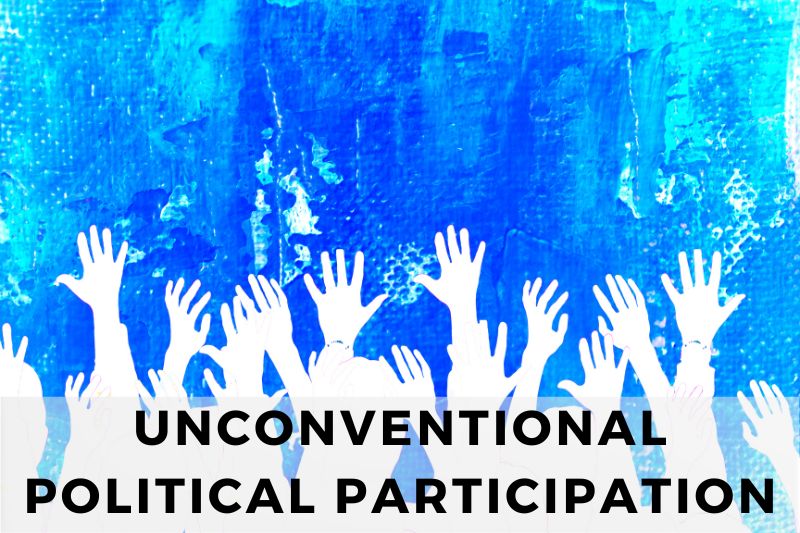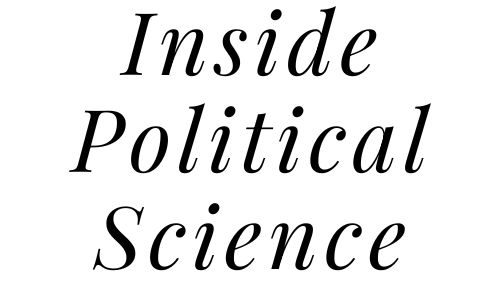
In modern democracies and beyond, political participation has evolved beyond traditional voting and campaigning. While conventional forms of political involvement are often seen as the most effective and appropriate means of engagement, unconventional forms of political participation have emerged as powerful tools for social change.
These alternative methods often challenge the status quo, disrupt the political process, and create new platforms for marginalized voices. This article will explore various examples of unconventional political participation, shedding light on their impact and significance in today’s political landscape.
Defining Unconventional Political Participation
Unconventional political participation refers to actions or activities that fall outside the typical, established forms of political engagement, such as voting or attending formal political meetings. These actions are often spontaneous, grassroots-driven, and can be seen as disruptive or non-institutional. While conventional participation aims to work within established political systems, unconventional methods may challenge these systems, aiming to provoke attention, create awareness, or instigate change. This form of participation is typically employed by those who feel excluded from traditional political avenues or who believe that traditional methods are insufficient for addressing pressing societal issues. Unconventional political participation can vary widely, from peaceful protests to more radical forms of civil disobedience and often carries significant social and political risks.
9 Examples of Unconventional Political Participation
Unconventional political participation encompasses a wide array of actions, each with its own goals, strategies, and levels of engagement. Here are some of the most prominent types:
#1. Protests and Demonstrations
Protests and demonstrations are among the most visible and widespread forms of unconventional political participation. These public gatherings aim to express collective dissent or demand political change. Participants typically gather in public spaces, often marching through streets or gathering at significant locations like government buildings or corporate headquarters.
These actions can range from peaceful marches to more confrontational or disruptive tactics. Whether expressing opposition to government policies, social injustices, or specific issues, protests can bring widespread attention to causes that might otherwise be ignored.
- Impact: While protests can sometimes lead to public tension or violence, they have historically been effective in mobilizing public opinion and forcing political leaders to address critical issues. The visibility of these actions often creates a media spectacle that amplifies their message.
#2. Civil Disobedience
Civil disobedience is the intentional and nonviolent violation of laws, regulations, or policies that are perceived as unjust. This form of political participation often involves individuals or groups breaking laws to challenge societal norms or political decisions that they deem oppressive.
Civil disobedience has a long history, with notable examples such as Mahatma Gandhi’s salt march in India and Martin Luther King Jr.’s participation in sit-ins during the American Civil Rights Movement. The goal is not only to disrupt the status quo but to force a conversation about the underlying injustices being challenged.
- Impact: While illegal, civil disobedience often garners widespread public support by appealing to the moral and ethical concerns of society. It is particularly powerful in contexts where it highlights government hypocrisy or the violation of human rights.
#3. Boycotts
Boycotts involve the collective decision to refrain from purchasing goods or services from a particular company or country, often in protest of unethical practices or policies. The goal is to exert economic pressure to drive change.
Boycotts can be local, national, or global in scale and can target anything from companies engaging in environmental destruction to countries committing human rights violations. Participants use their consumer power to make a political statement and demand corporate or governmental accountability.
- Impact: Boycotts have the potential to significantly harm a company’s bottom line or a nation’s economy, compelling those in power to address the issues at hand. Successful boycotts can also inspire similar movements in other areas of society.
#4. Strikes
Strikes typically involve organized work stoppages by employees or workers to protest working conditions, wages, or policies that negatively affect their rights. These actions disrupt the normal operations of businesses or industries, forcing a confrontation between workers and employers or governments.
Strikes can be an effective tool for labor unions, social movements, or even student organizations to draw attention to inequities. The threat of economic disruption can often bring employers or politicians to the negotiating table to address grievances.
- Impact: Strikes are powerful because they target the economic engine of society, often resulting in significant political and economic pressure. Historically, strikes have led to significant labor reforms and improvements in workers’ rights.
#5. Digital Activism (Hacktivism)
Digital activism refers to the use of digital tools, social media, and technology to promote political change or raise awareness about social issues. One form of digital activism is hacktivism, which involves the use of hacking to disrupt or expose information that highlights governmental or corporate wrongdoings.
Hacktivists often target government websites, corporate databases, or online platforms to draw attention to social justice issues. This can include data leaks, website defacement, or denial-of-service attacks.
- Impact: While controversial and sometimes illegal, digital activism and hacktivism have led to significant shifts in public awareness and political action. These tactics allow activists to bypass traditional gatekeepers and speak directly to global audiences.
#6. Viral Campaigns
Viral campaigns leverage the power of social media to spread political messages rapidly across a wide audience. These campaigns often use creative content such as videos, memes, and hashtags to generate support for causes and create movements that can go viral within hours or days.
Viral campaigns often tap into the collective emotions of internet users, using humor, shock value, or poignant storytelling to engage people emotionally. Examples include campaigns focused on social justice, climate change, and human rights.
- Impact: The virality of these campaigns can influence public opinion, garner widespread media attention, and pressure politicians or corporations to act. While sometimes fleeting, viral campaigns have proven to be highly effective in mobilizing grassroots support.
#7. Guerrilla Art
Guerrilla art refers to the use of art as a form of political expression or protest, often through unlicensed, unauthorized, or unsanctioned installations in public spaces. This can include street art, graffiti, or spontaneous public performances.
Guerrilla artists may use bold visual imagery or satire to address political issues, challenge dominant narratives, or critique social norms. These works often operate outside the realm of the mainstream art world, making them accessible and impactful to a broader audience.
- Impact: Guerrilla art is often viewed as an act of rebellion or subversion, but it can also act as a form of resistance that sparks conversation and drives political change. Its visibility in public spaces allows it to reach diverse audiences and makes it difficult to ignore.
#8. Petitions and Online Campaigns
Petitions and online campaigns involve collecting signatures or endorsements from individuals who support a particular cause or action. These can be formal, such as petitioning lawmakers, or informal, such as online campaigns through social media platforms.
Online petitions allow activists to quickly gather support from a global audience, and many movements have gained traction by organizing digital petitions, rallying people to contact political representatives or sign a call for action.
- Impact: Petitions are a way to demonstrate public support for a cause, pressuring decision-makers to take action. When successful, they can result in significant changes in policy or legislation.
#9. Direct Action and Occupation
Direct action and occupation refer to immediate, on-the-ground actions taken to disrupt political or economic systems in order to bring attention to an issue. This can include sit-ins, blockades, or occupations of public or private spaces, such as government buildings or corporate offices.
These actions often aim to create an immediate, palpable disruption to normal operations, drawing attention to the cause and demonstrating the urgency of the issue.
- Impact: Direct action and occupation often create high-stakes confrontations that can result in public outcry, government intervention, or negotiations. They are designed to create a sense of urgency and force political action.
Conclusion
Unconventional political participation plays a crucial role in modern democracies, offering marginalized groups alternative ways to voice their concerns and challenge injustices. From protests and boycotts to digital activism and guerrilla art, these actions disrupt traditional systems and bring attention to critical issues.
While controversial, they often lead to significant social change by mobilizing public support and pressuring decision-makers. As political landscapes continue to evolve, these methods will remain vital in the ongoing fight for justice and equality, proving that effective political engagement extends beyond voting.
